
Russian Dome over Morocco
/ Главная / Russkiy Mir Foundation / Publications / Russian Dome over MoroccoRussian Dome over Morocco
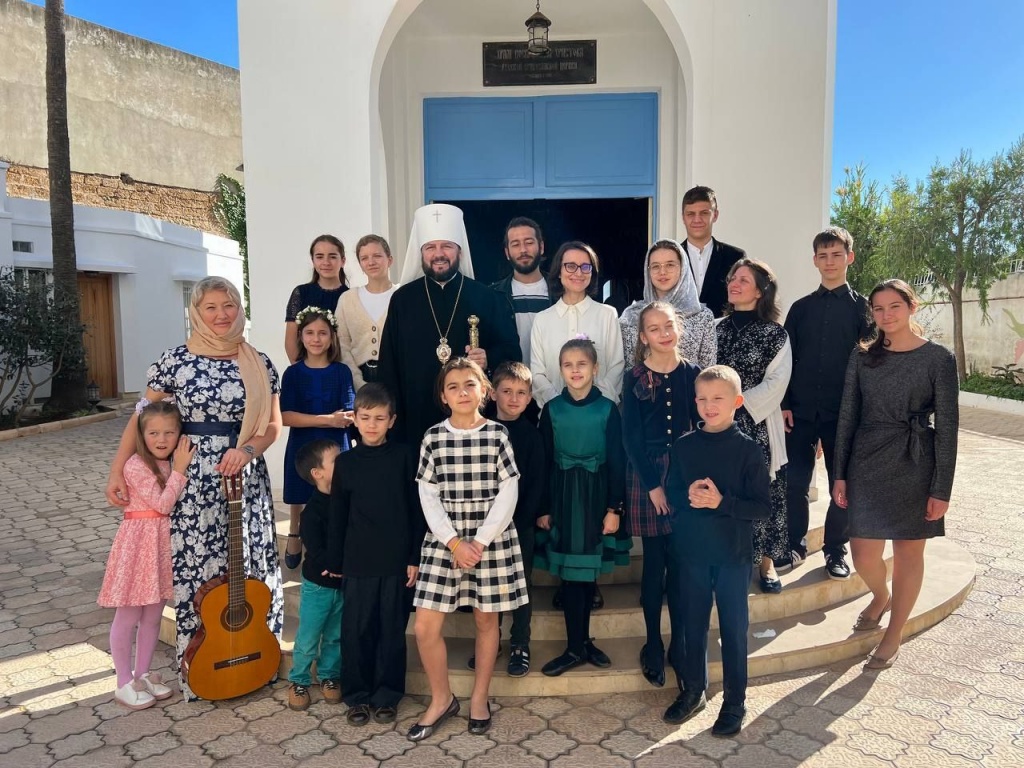
Parishioners of the Church of the Resurrection in Rabat. Photo: orthodox.ma
Holy Resurrection Orthodox Church in Rabat, Morocco turned 90 years old. The church is unique because it is the oldest Russian church open not only in Morocco but also in Africa. Archpriest Maxim Massalitin spoke with Ruskiy Mir about his parish, how the church was built, how it was doing for all those 90 years, and how it has changed after a major restoration in the last decade.
Temporary and permanent temples
- Holy Resurrection Orthodox Church in Rabat is considered the oldest Russian Orthodox church in Africa. Is this really true?
- Russian Orthodox communities had appeared several years before this church was built, but they usually had some temporary premises at their disposal. The first Orthodox temple in Morocco was built in Khouribga city, located in the central part of the country. There is still a phosphate company located, it makes up the Kingdom’s budget. Many Russians worked there in 1930s, so the French hired an Orthodox priest and gave out a former temporary Catholic church equipped in a wooden barrack.
The very first Orthodox church was settled in this ex-barrack. The church used to have an onion dome with stars and a large eight-pointed cross erected on the roof, while there was a wonderful iconostasis inside it. Unfortunately, we lost this temple in a fire about 50 years ago.
The Holy Resurrection Orthodox Church construction started in 1931, the consecration took place next year. It was initiated by the same congregation as in Khouribga, namely the “Russian Orthodox Church in Morocco” association.
- Those Russian specialists in Khouribga were those emigrants who fled after the October Revolution?
- They were Russian emigrants who started to arrive to Morocco in the 1920s. It is believed that the need for an Orthodox church was first raised among the Legionnaires, that is, military personnel who served in the French Infantry Regiment in Morocco.
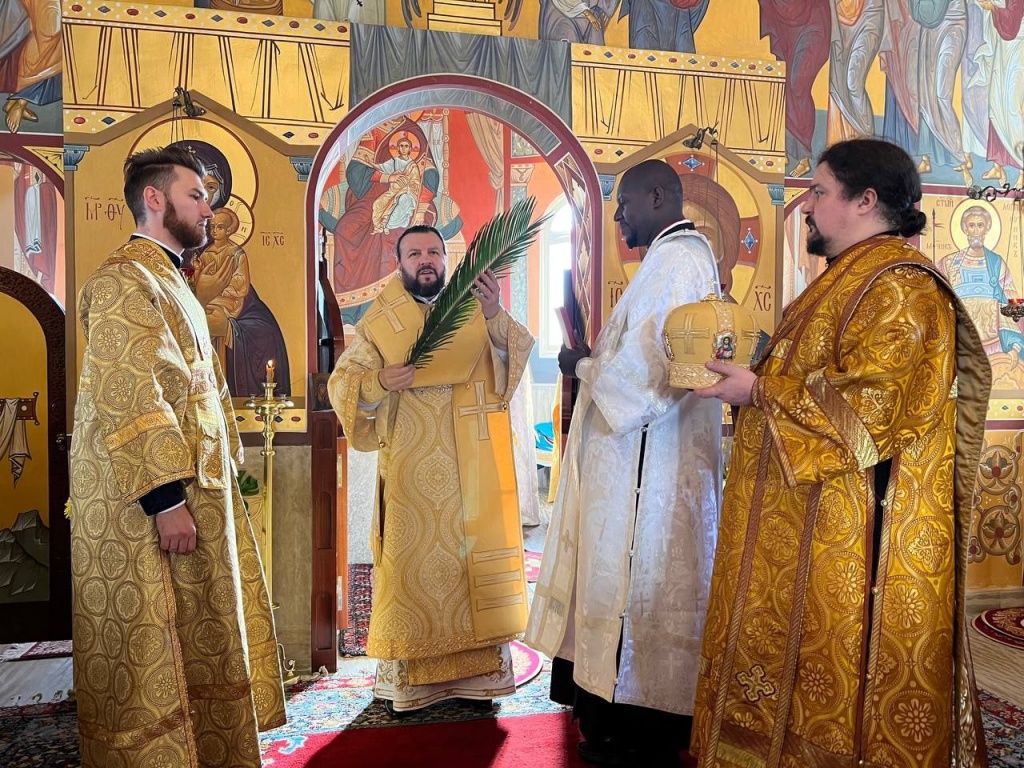
Photo: orthodox.ma
We are talking, of course, about White Russian émigrés and their children. They arrived in Morocco in different ways. For example, the Counts Sheremetevs, who left Moscow after Lenin's death, first arrived to France, where Peter Petrovich studied agronomy. Afterwards they moved to Morocco for his work. Here the Sheremetevs had the son Peter, whom you probably know, and his younger sister Praskovya. They are both well, thanks God.
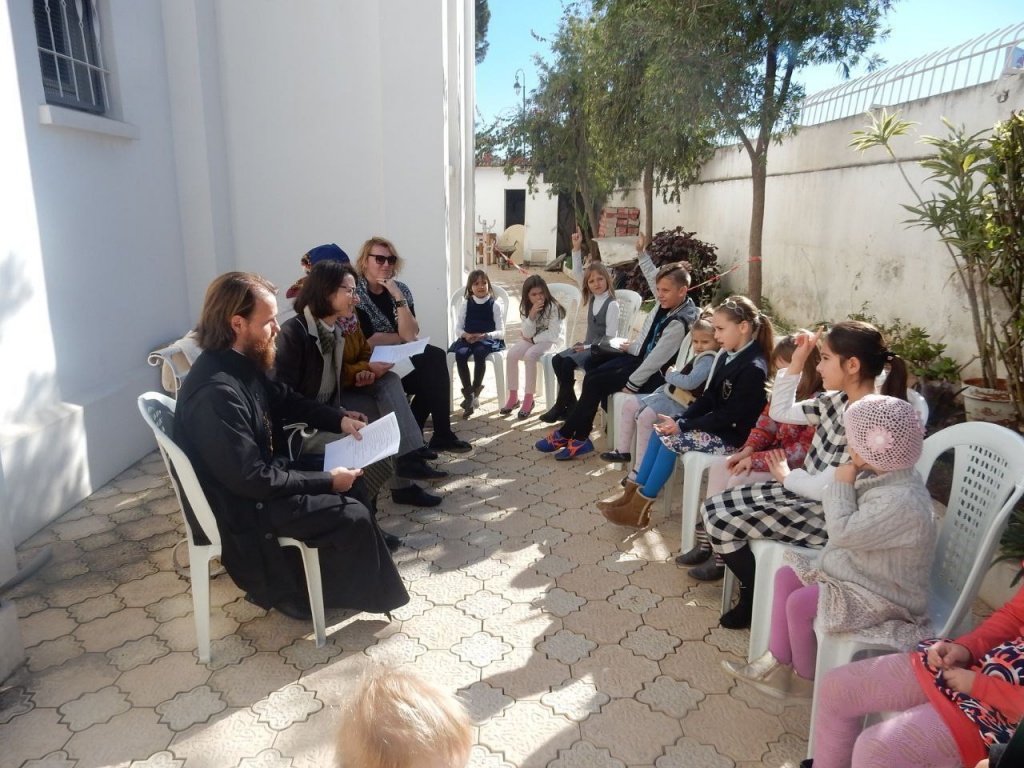
Photo: orthodox.ma
From the temple history
- With what funds was built the temple in Rabat?
- We do not have documents on the attraction of funds from abroad, although we know that donations were collected from everywhere, primarily inside Morocco. We know that funds from charity concerts given by the Russian community were used to finance the construction. This émigré church was built in very simple way, no decorations and it was all white. What we see now is the result of the reconstruction that took place over the last thirteen years, first of all embellishing our temple with frescoes.
The land to build the temple was obtained by miracle. A small area, just of eight and a half acres was donated by a Muslim Moroccan man married to a Russian noblewoman. It may have been the first Russian-Moroccan marriage in history. The Moroccan was a wealthy and noble resident of Rabat. One day, when he was seriously ill, his wife invited an Orthodox priest (the first Orthodox priest of the community, hieromonk Varsonophy Tolstukhin). After this prayer, Mr. Djebleyhad recovered and in gratitude donated to the Orthodox community a piece of land for the church site. This check is still preserved in our archives.
The church was meant to be built in a Russian traditional style, however, the local government imposed a different style. There was an extension added to the dome, which made our church look like Byzantine samples. Still, it has a unique architecture because the dome is not round, but petal-kind, looking much more like the local Moorish religious constructions. Some see it as similar to a mosque. But on this dome rises an eight-pointed cross, just like on the bell tower.
The main goal of the reconstruction was to preserve the set of frescos created by the Moscow icon artists of the artel named Happiness in 2010-2011.

- How has the church survived during all these 90 years?
- There was real a threat when Morocco was fighting for its independence. There were popular uprisings that took lives of a number of colonists, primarily French. In those years, many Russian emigrants left the country. But on the whole, Morocco was and remains a monarchical state, and the royal authority has shown an interest in preserving the Christian communities. There are very few of threm, and perhaps not as influential as in other North African countries.
The church was no longer under the authority of the Patriarchal Exarchate in Western Europe, but directly under the Patriarch of Moscow in 1972. Priests were now appointed by the Department of External Church Relations. This, of course, revived local Orthodox life, although few parishioners remained. The church began to receive a small allowance from Moscow, which allowed the priests to continue their ministry, more or less maintaining the church until the major reconstruction in our time.
First Wave Parishioners
- How many parishioners are in the temple now?
- There are not enough parishioners. The new emigration certainly adds to the parish, as do people who come to Morocco for work, but it is incomparable to the number of Russian emigrants who lived here after the first wave.
At the moment, the temple is filled mostly with Russian-speaking parishioners. As in previous years, there were some representatives of other Orthodox nations in the parish: Serbs, Romanians, Bulgarians, and Lebanese.
- Are there any Moroccans among the parishioners, children of mixed marriages?
- As for the local population, our mission here is very limited by local laws. Children of our baptized compatriots born in a mixed family are considered Muslims by default. Nevertheless, there is an interest among the local population in Orthodoxy and Christianity, and Moroccans visit the church. We have guided tours for local students, for people who study architecture or history. And they get amazed when they enter our magnificent temple, the jewel of the Kingdom. There is nothing else like it in Morocco. However, we have no right to baptize Moroccans in our temple according to the Moroccan law.
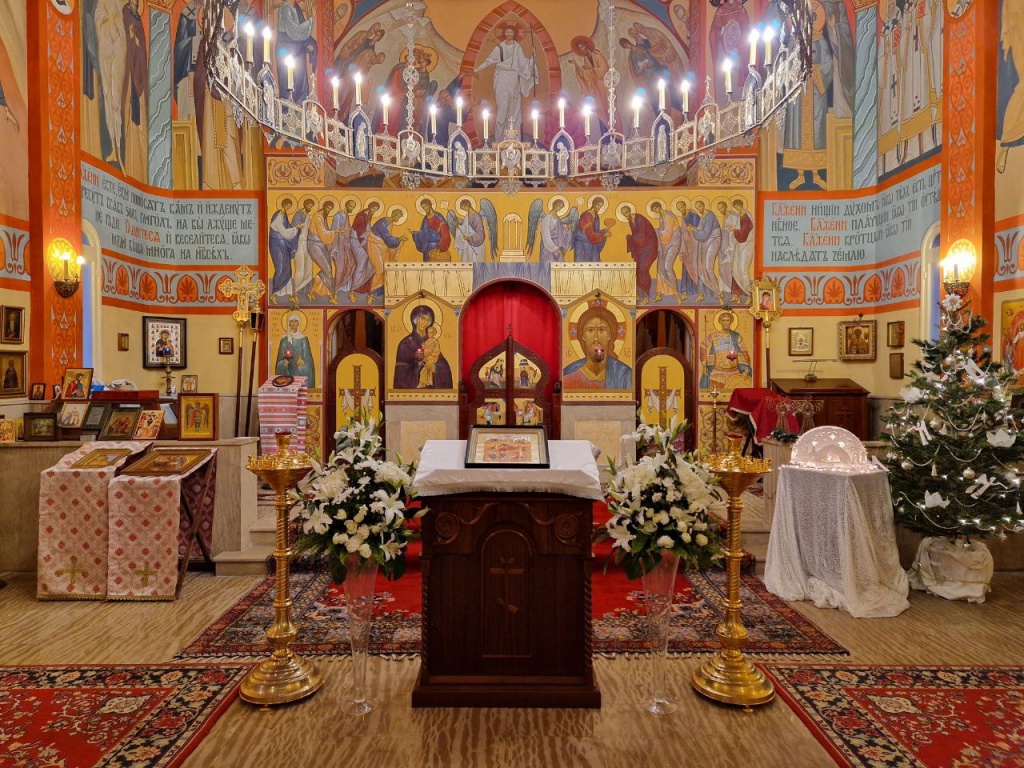
Photo: orthodox.ma
Orthodox people in Morocco
- Who serves in the Church of the Resurrection?
- Our church has almost always been full with people from Russia, with the exception of the few people from the white emigration who were born in France and came from there to serve as clergymen.
I also come from Russia, and was born in Kiev. Here I serve alone. It must have been a tradition since the 1950s that there was always one priest, who would go around Morocco as well. Russian people have lived all over Morocco, and to this day it is so. Thus, it was made possible in recent decades to restore worship and church prayer in a number of cities. Most notably in the Church of the Assumption in Casablanca, it was under the jurisdiction of the Russian Church Abroad. In 2011 it was sold for demolition. Our congregation has immediately initiated legal actions, but it took long eight years to regain ownership.
Thanks to the struggle for the Church of the Assumption in Casablanca, a small but strong congregation has formed. Unlike Rabat, where services are held constantly, they are held once every month or two in Casablanca.
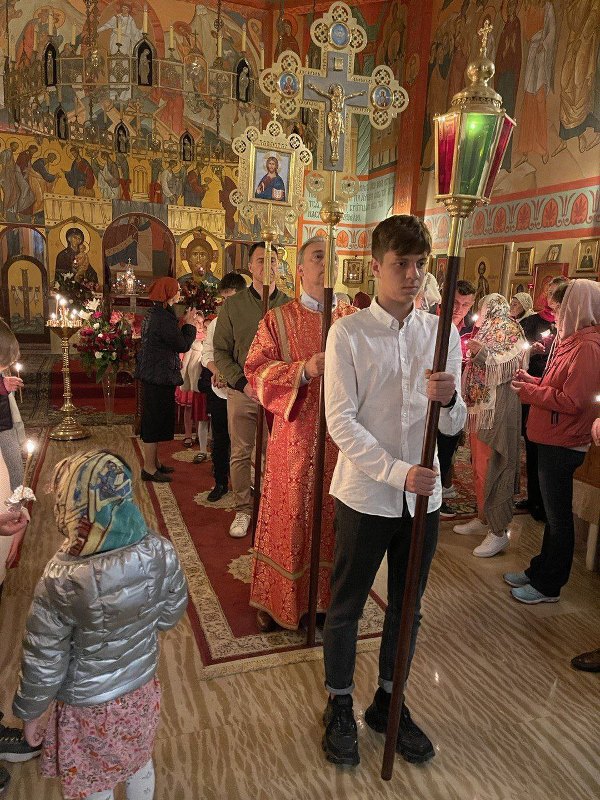
Photo: orthodox.ma
- Does the climate affect the Orthodox tradition in Africa? Is it sometimes necessary to shift or shorten services because of the heat?
- When I came here, our parish choir was in its formative years, and we invited to the Easter services an experienced choir director from Moscow. He expressed his impression of the climate in Morocco as follows: the key word in the "North Africa" phrase is "north”. It is quite cool in winter, so we have to heat the church before the service.
The climate in the country is varied. In Rabat, the high humidity can cause things to get moldy. While in Marrakech everything dries out so much that by the end of the service the prosphora turns into breadcrumbs.
The climate does not affect our tradition; we try to serve the same way we do in Russia. The Russian community in Morocco is maintaining close ties with Russian culture. Russian people who come to our church have always wanted it to be like in their homeland. Like at home.
New publications

 Mikhail Kalatozov, a director who transformed the world of cinematography in many ways, was born 120 years ago. He was a Soviet film official and a propagandist. Above all, he was capable of producing movies that struck viewers with their power and poetic language.
Mikhail Kalatozov, a director who transformed the world of cinematography in many ways, was born 120 years ago. He was a Soviet film official and a propagandist. Above all, he was capable of producing movies that struck viewers with their power and poetic language.  Ukrainian authorities have launched a persecution campaign against the canonical Ukrainian Orthodox Church (UOC), the biggest one in the country's modern history. Over the past year, state sanctions were imposed on clergy representatives, searches were conducted in churches, clergymen were arrested, criminal cases were initiated, the activity of the UOC was banned in various regions of the country, and monasteries and churches were seized.
Ukrainian authorities have launched a persecution campaign against the canonical Ukrainian Orthodox Church (UOC), the biggest one in the country's modern history. Over the past year, state sanctions were imposed on clergy representatives, searches were conducted in churches, clergymen were arrested, criminal cases were initiated, the activity of the UOC was banned in various regions of the country, and monasteries and churches were seized.  When Nektary Kotlyaroff, a fourth-generation Russian Australian and founder of the Russian Orthodox Choir in Sydney, first visited Russia, the first person he spoke to was a cab driver at the airport. Having heard that Nektariy's ancestors left Russia more than 100 years ago, the driver was astonished, "How come you haven't forgotten the Russian language?" Nektary Kotlyaroff repeated his answer in an interview with the Russkiy Mir. His affinity to the Orthodox Church (many of his ancestors and relatives were priests) and the traditions of a large Russian family brought from Russia helped him to preserve the Russian language.
When Nektary Kotlyaroff, a fourth-generation Russian Australian and founder of the Russian Orthodox Choir in Sydney, first visited Russia, the first person he spoke to was a cab driver at the airport. Having heard that Nektariy's ancestors left Russia more than 100 years ago, the driver was astonished, "How come you haven't forgotten the Russian language?" Nektary Kotlyaroff repeated his answer in an interview with the Russkiy Mir. His affinity to the Orthodox Church (many of his ancestors and relatives were priests) and the traditions of a large Russian family brought from Russia helped him to preserve the Russian language.

 The leaders of the Friends of the Great Russia cultural association (Amici Della Grande Russia) in Italy believe that the Western policy of abolishing Russian culture in Europe has finally failed. Furthermore, it was doomed to failure from the beginning.
The leaders of the Friends of the Great Russia cultural association (Amici Della Grande Russia) in Italy believe that the Western policy of abolishing Russian culture in Europe has finally failed. Furthermore, it was doomed to failure from the beginning.  Name of Vladimir Nemirovich-Danchenko is inscribed in the history of Russian theater along with Konstantin Stanislavski, the other founding father of the Moscow Art Theater. Nevertheless, Mr. Nemirovich-Danchenko was a renowned writer, playwright, and theater teacher even before their famous meeting in the Slavic Bazaar restaurant. Furthermore, it was Mr. Nemirovich-Danchenko who came up with the idea of establishing a new "people's" theater believing that the theater could become a "department of public education."
Name of Vladimir Nemirovich-Danchenko is inscribed in the history of Russian theater along with Konstantin Stanislavski, the other founding father of the Moscow Art Theater. Nevertheless, Mr. Nemirovich-Danchenko was a renowned writer, playwright, and theater teacher even before their famous meeting in the Slavic Bazaar restaurant. Furthermore, it was Mr. Nemirovich-Danchenko who came up with the idea of establishing a new "people's" theater believing that the theater could become a "department of public education."  "Russia is a thing of which the intellect cannot conceive..." by Fyodor Tyutchev are famous among Russians at least. December marks the 220th anniversary of the poet's birth. Yet, he never considered poetry to be his life's mission and was preoccupied with matters of a global scale. Mr.Tyutchev fought his war focusing on relations between Russia and the West, the origins of mutual misunderstanding, and the origins of Russophobia. When you read his works today, it feels as though he saw things coming in a crystal ball...
"Russia is a thing of which the intellect cannot conceive..." by Fyodor Tyutchev are famous among Russians at least. December marks the 220th anniversary of the poet's birth. Yet, he never considered poetry to be his life's mission and was preoccupied with matters of a global scale. Mr.Tyutchev fought his war focusing on relations between Russia and the West, the origins of mutual misunderstanding, and the origins of Russophobia. When you read his works today, it feels as though he saw things coming in a crystal ball...